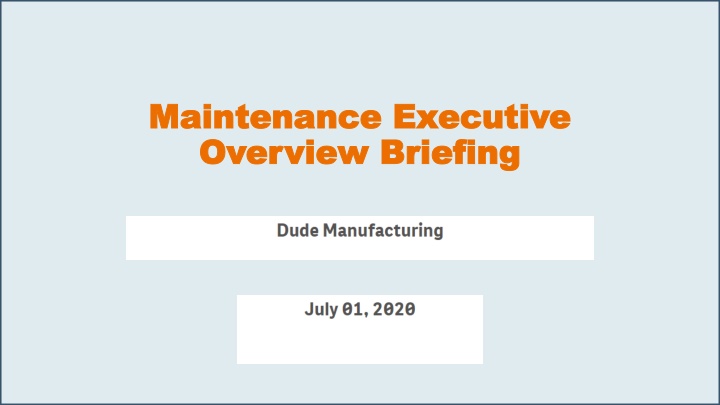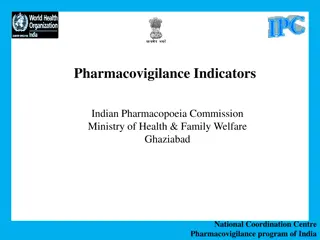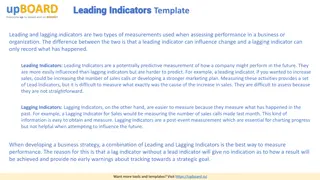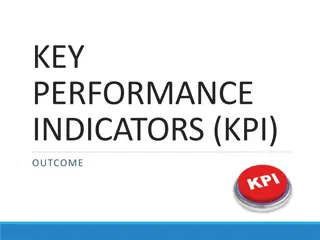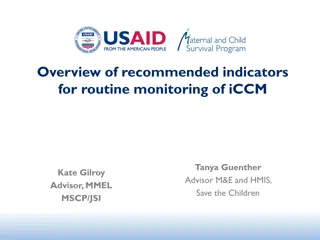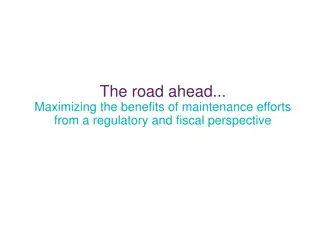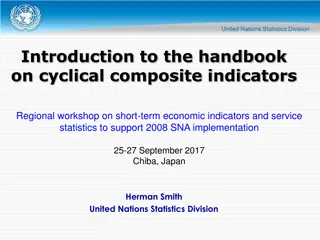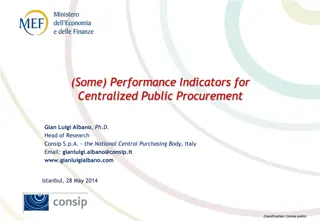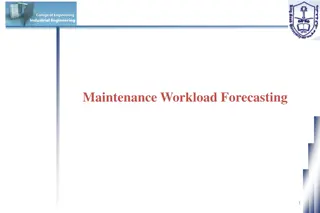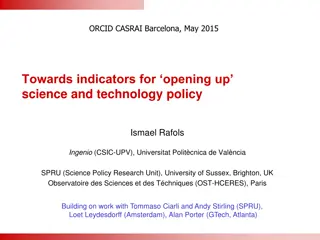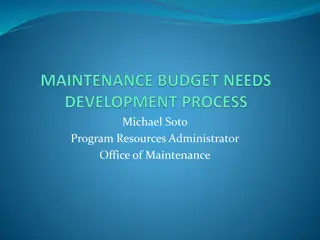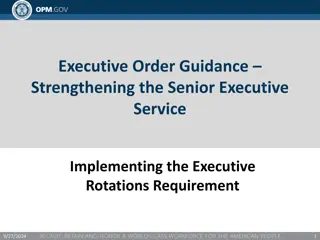Maintenance Executive Key Performance Indicators Overview
Explore key performance indicators (KPIs) for maintenance executives to increase staff efficiency, streamline workflows, enhance customer satisfaction, and monitor maintenance program health. Evaluate metrics like work orders, preventive maintenance success, and data quality to optimize operations and reduce downtime.
Download Presentation

Please find below an Image/Link to download the presentation.
The content on the website is provided AS IS for your information and personal use only. It may not be sold, licensed, or shared on other websites without obtaining consent from the author.If you encounter any issues during the download, it is possible that the publisher has removed the file from their server.
You are allowed to download the files provided on this website for personal or commercial use, subject to the condition that they are used lawfully. All files are the property of their respective owners.
The content on the website is provided AS IS for your information and personal use only. It may not be sold, licensed, or shared on other websites without obtaining consent from the author.
E N D
Presentation Transcript
Maintenance Executive Maintenance Executive Overview Briefing Overview Briefing
Categories What will these Key Performance Indicators (KPIs) allow me to do? Increase maintenance staff efficiency and overall productivity, streamline workflows, improve customer engagement and satisfaction, capture and show productivity gains, and track overall health of your maintenance program maintenance Determine success of your preventive maintenance program, transition to being more proactive, reduce backlogged work, increase life expectancy of equipment, and decrease catastrophic failures preventive Time Frame Key Performance Indicators (KPIs): Past 12 Months Trends: Past 3 Years, plus current year
Total Number of Work Orders This reflects how many repairs and jobs were captured in the 12 month rolling window. (includes all statuses)
Work Orders Per Enrollment Per Year This metric is an indicator of how much work is being captured and also serves as a measurement of software utilization. Far below average can indicate you are not capturing all work being performed. Far above the average may be a sign of trying to capture too much at the risk of becoming inefficient. This metric is important because the more work is captured, cases can be stronger for justifying resources. (rolling 12 Months, ignores rejected work)
Work Orders Per Squarefoot Total count of work orders for a 12 month rolling window (this month last 12 months, ignores rejected work) divided by the total sum of square footage.
Total Number of Work Orders by Month/Year Trend: Past 3 Years, plus current date: based on Created Date
Percentage of Completed Work with Data Quality
Percentage of Work Orders Completed in Less than a Week This KPI indicates how much work an institution is able to complete in 7 calendar days. Below the national average suggests potential process improvements for managing and completing work. Above the national average could be a sign you have embraced mobile, your staff completes their own work assignments online and/or have reduced (or eliminated) paper in your processes. This compares Completion Date Start Date (uses Request Date if Start Date is not used) for WO s with a Priority of Low, Med or High & ignores PM s to see what % of PM WO s are completed in 7 Days or Less. (Rolling 12 Months)
% of Reactive Work Completed in a Week or Less by Month/Year This compares Completion Date Start Date (uses Request Date if Start Date is not used) for WO s with a Priority of Low, Med or High & ignores PM s to see what % of PM WO s are completed in 7 Days or Less. (Trend: Past 3 Years, plus current date: based on Completion Date)
% RM WOs Completed in a Week by Year
Average Count of Work Orders Per Employee Per Year This metric gives you a direct comparison of your staff s productivity compared to peer institutions. Employees are users who have been assigned more than 30 work orders, but less than 2,000 in a rolling 12 month window.
Average Work Orders Per Employee by Month/Year
Average Work Orders Per Individual by Year Trend: Past 3 Years, plus current date: based on Created Date
Average Number of WOs per Employee by Month, Year This metric reflects how well you are capturing labor transaction data along with the productivity of your staff. The hours captured in this metric are wrench turning hours that are performed on the actual work order. Institutions that implement productivity strategies increase wrench turning time up to four hours per week. That s the equivalent of adding more than a month of productive time per year. Employees are users with more than 500 hours, but less than 3,000 in a rolling 12 months window.
Total Number of PM Work Orders Generated over past 12 Months Rolling 12 Months, includes all statuses
PM WOs Completed per Enrollment This metric is used along with the PM/WO ratio to gauge the strength of your PM program. Implementing a strong PM program typically has an ROI within 1-2 years by reducing system failures and emergencies, extending equipment life and decreasing energy consumption. Increasing PM work can also help make workers' schedules more predictable as organizations performing more PM work see reductions in reactive work over time. (Rolling 12 Months, ignores rejected work)
PM Work Orders per Squarefoot KPI: Rolling 12 Months
Ratio of PM Work Orders to Reactive Work Orders This metric lets you evaluate how successful your institution has been at transitioning from a reactive to a proactive mindset and indicates how much of your M&O resources are dedicated to PM vs Reactive work. As more time is invested into PMs, you should see a decrease in reactive work, an increase in cycle times and an improved learning environment. (Rolling 12 Months)
Ratio of PM to RM by Month/Year Trend: Past 3 Years, plus current date: based on Created Date
Ratio of PM to CM by Year Trend: Past 3 Years, plus current date: based on Created Date
Percentage of PM WOs Completed in a Month or Less This metric is a measurement of the responsiveness of proactive work. An above average measurement here leads to higher productivity and a decrease in backlog. This compares Completion Date Start Date (uses Request Date if Start Date is not used) to see what % of PM WO s are completed in 30 Days or Less. (Rolling 12 Months)
% of PMs Completed 30 Days or Less by Year Trend: Past 3 Years, plus current date: based on Completion Date
Hours Spent on PM by Year Trend: Past 3 Years, plus current date: based on Created Date
Scheduled PMs for the Next 12 Months KPI: Next 12 Months
